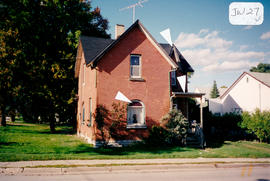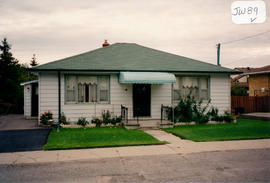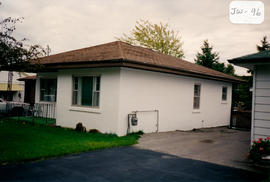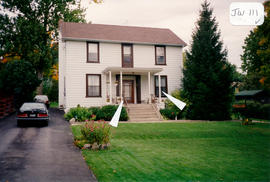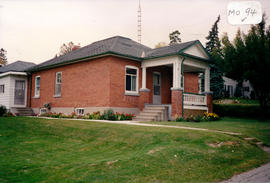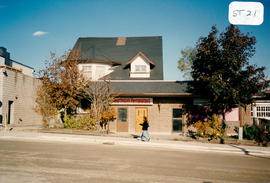- CA BWGPL GJ-HB-2017-04-05-12
- Item
- 1995
Part of George Jackson fonds
The building located at 27 John St. West (on the northeast corner of John and Moore Streets) was built around 1890 in the Gothic Revival style. It was the home of John Lee (a retired farmer from north of Bradford) for many years. After World War II, it was the home of Mildred Peelar and her family. Walter Mundy later lived here before the house was sold.
The 1½-storey, ‘L’-shaped, main building has a medium-pitched, gable roof with a steeply-pitched, gable dormer. These are Gothic features. There are round-head, coloured transom lights over several ground-floor windows that are structurally supported above by arched, brick voussoirs. There is also a rectangular transom over the entrance door. Windows of various sizes (indicating post-1880 construction) have the original, wood lug sills. The structure has brick, masonry construction and a rusticated, stone foundation. According to the 2000 inventory, the replacement porch varies from the original design intent. (1, 2, 3)
George Jackson

